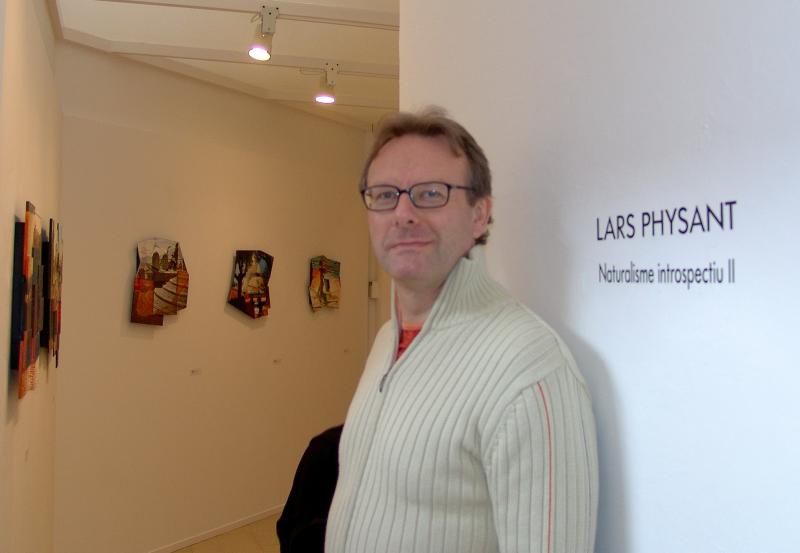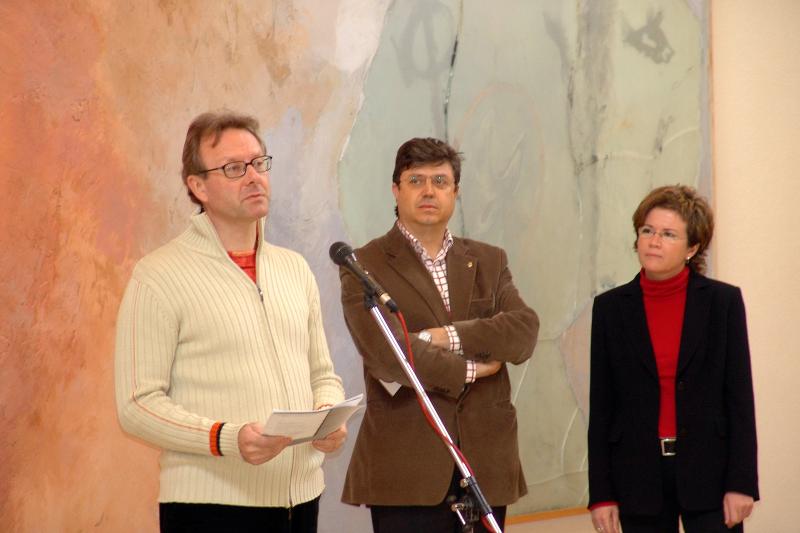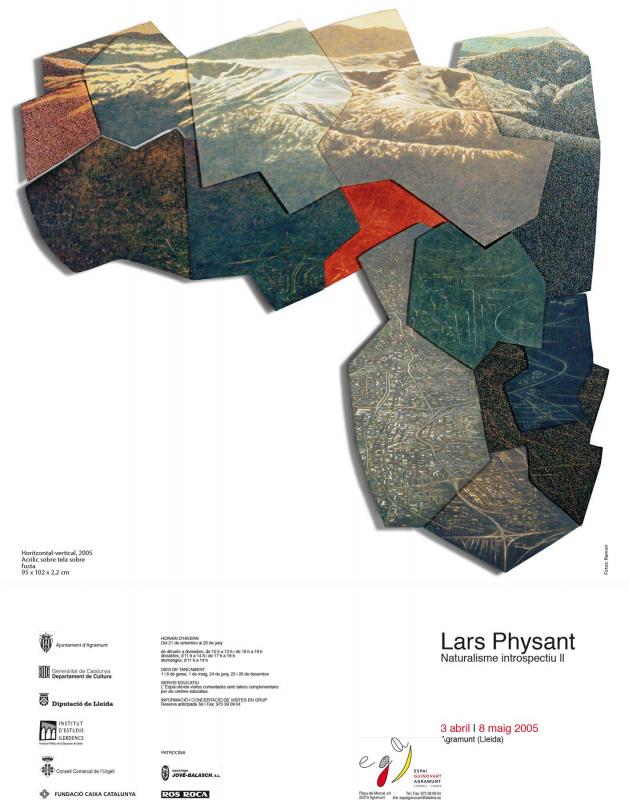Lars Physant
Introspective Naturalism II
LARS PHYSANT
Painter. Born in Copenhagen in 1957. He has lived in Barcelona since 1994. From a very young age he has worked on the subject of the union of realism and abstraction within the same work. Since 1997, he has referred to his paintings with the expressions united reality and introspective naturalism. He has made numerous exhibitions in galleries, institutions and museums in several European countries. Their paintings have been reproduced in several books and magazines. His work also includes the genres of religious art for the Church and the portrait.
ARCHITECT OF SPACE AND TIME
Obviously, every good painter always surprises us, although we already know something or much of his work. Lars Physant surprises us particularly. In the first place, due to the undoubted high quality of his art; and then, and not with less intensity, for the format of his paintings. Pictures that do not always have to do with the etymology of the word, but which are as explicit, original support, of a pictorial task. Lars Physant does not deny the usual concept of the painting, what he does is go more Beyond both geometrically and intentionally creative.
For a moment, this "go further" will surprise us in a different way than usually surprises a true work of art. We will almost be disoriented in the space we usually expect from all pictorial representations. We will come to ask where is the space that the artist has wanted to reproduce in a demanding transmutation also very much beyond the let's say a copy. Well, sen's space offers - ¿deconstructed ?, dislocated ?, misrepresented? - outside the usual perception of reality. Let this landscape be a reality, a human figure, a still life. Space that as a continent and content covers the vision and its meaning, which motivate the work. And with this alteration, as apparent as real and always surprising, aesthetically surprising, that of the time.
The contents of the paintings of Lars Physant are unforeseen geometric shapes that, if they escape from the usual table, are not alien to it. Transgressed geometry, yes; but for a new vision of the reality at the same time transgressed for greater uptake and greater aesthetic enjoyment. And more than aesthetic, if one can say of a work of art. Lars Physant creatively changes the space and also creatively alters the time that often plays a leading role in his work. A time, the one of these pictures by Lars Physant, that sometimes is plotted not in linear continuity, but in the accumulation of present and future, or of present and past. Transgred in their dislocations, the picture of Lars Physant manages to convince - conceptually and aesthetically - that in a marina or in one street at the same time is the twilight - morning or afternoon - and at noon. All this due to the very fine juxtaposition of the various fragments that constitute - abstract and at the same time figurative - the always successful and beautiful unit of the work.
These woods are the support on which Lars Physant applies the acrylics of his chromaticism also very personal ... in themselves, seen in the study, and without colors yet, almost already contain a pictorial work, given the aesthetic intention with which the artist agrees to them avoiding a single flat surface. Also juxtaposition and overlap of fragments that will support the intentionality of achieving, as it is achieved, a kind of relief in which, in addition to drawing and color, we will reach the surprising transgression of space-time . Transgression that is new revelation, new experience of both dimensions. And, in the end, we can achieve intense realism by means of a non-anti-figurative abstraction, but very figurative since it has been sought, found and placed in the same place of art - the painting, even if it is not square ... - This is what both the painter and the contemplator seek and expect from painting.
And no, nothing of today's deconstructions put into fashion and subsequent to the pictorial work of Lars Physant. Here is an intense construction that the painter calls, with all success, a united reality. Can the picture appear to be decomposed on lines of flight to a beyond the time and space that the viewer usually expects explicitly instantly? Let's say a unification of forms and meaning, of space and time, occurs after a brief lapse, which is the source of the surprise of artistic originality. Originality that is not only due to the conceptual nature of Lars Physant's work, but also and in identical measure to the fact that this artist is an excellent painter. Excellent painter and architect of space and time, with aesthetic pleasure it gives us almost the pleasure of ubiquity.
Enrique Badosa





